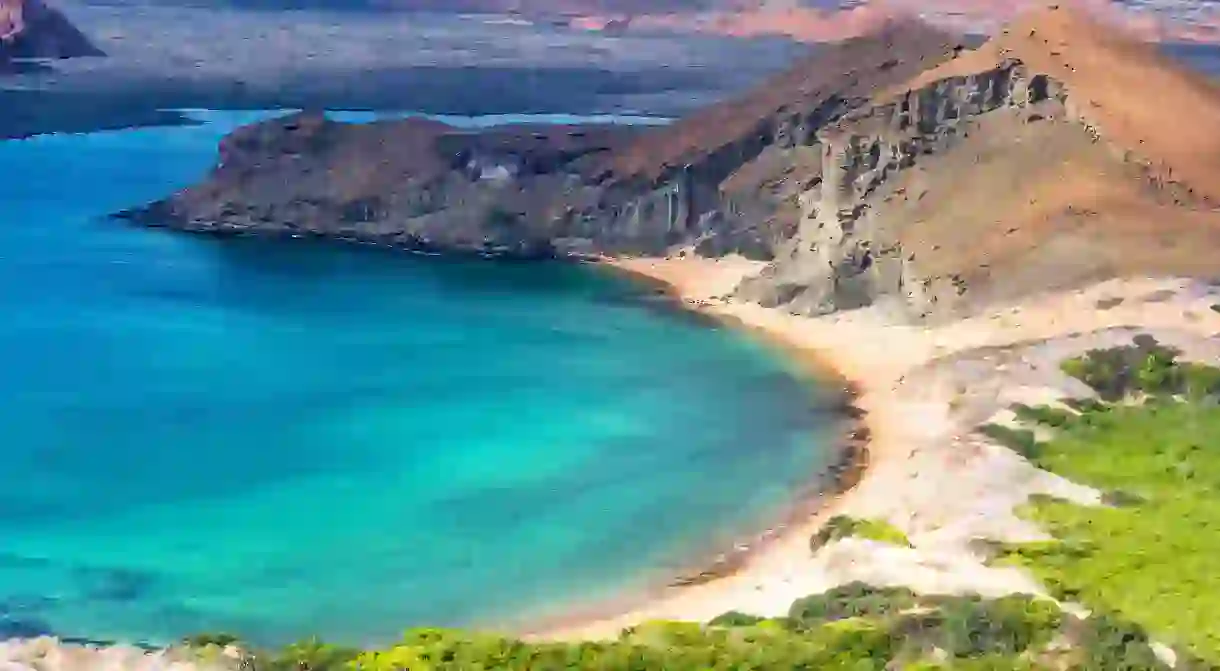The Best Places to Visit in Ecuador

From the snow-capped peaks of the Andes mountains to the idyllic beaches of the Pacific Coast and the colorful colonial architecture of Quito, Ecuador is a country brimming with natural and cultural wonders. To help you plan your trip, we’ve selected the best destinations to visit and things to do in Ecuador.
Quito
Architectural Landmark

At 2,850m (9,350ft), Quito is the world’s second-highest capital city and contains many of Ecuador’s most important religious landmarks. Within its Unesco-listed historic center, the Church of La Compañía de Jesús, the Presidential Palace and the San Francisco Church and Monastery display some of South America’s most beautifully preserved colonial architecture. For superb aerial views, climb up the Basilica del Voto Nacional or ride the TelefériQo gondola to Pichincha – the volcano which overlooks the city. At the Intiñan Museum, north of the city center, you can snap a photo at the equator.
With Culture Trip, you can enjoy a guided walking tour of Quito and visit the equator as part of our exclusive eight-day Ecuador adventure, led by our Local Insider.
Galápagos Islands
Natural Feature
Are the Galápagos on your travel bucket list? Consider joiningCulture Trip’s express five-day overland Galápagos Islands trip, which includes Santa Cruz, San Cristóbal and a visit to one of the uninhabited islands.
Cotopaxi National Park
Park

Quilotoa volcano
Natural Feature
Quilotoa is a volcano within the Illinizas Ecological Reserve, on the westernmost edge of the Ecuadorian Andes, renowned for its turquoise crater lake which formed around 800 years ago following its last major eruption. In roughly five hours, you can hike around the rim of the crater while admiring panoramic views of the lake itself and the surrounding nature. If you fancy a longer adventure, follow the Quilotoa loop (accessible by bus from the nearby city of Latacunga), which takes three or four days to complete and passes through the remote mountain villages of Quilotoa, Chugchilán, Isinlivi and Sigchos.
Guayaquil
Natural Feature

Known as The Pearl of the Pacific, Guayaquil – Ecuador’s most populous city – is within relatively easy reach of some of the country’s best beaches, such as Salinas, Montañita and Puerto Lopez. Not just a convenient hub for exploring the coast or flying to the Galápagos, there’s plenty to see and do in the city itself: admire free-roaming iguanas in Parque Seminario, learn about Guayaquil’s heritage at the Parque Histórico, or take a stroll along Malecón 2000 – the lively promenade which runs along the Guayas River, lined with gardens, monuments, museums, bars and restaurants.
Baños de Agua Santa
Natural Feature
Ecuador’s adventure capital and gateway to the Amazon, Baños de Agua Santa is named after its mineral-rich hot springs (geothermally heated by the Tungurahua volcano), which are said to have myriad health benefits. Although compact, the town has a fairly extensive selection of budget and luxury accommodation and is an excellent base for venturing into the nearby nature. Go whitewater rafting on the Pastaza River, rent bikes and cycle the Ruta de las Cascadas (Waterfall Route) to Puyo, or ride the iconic Swing at the End of the World – one of South America’s most Instagrammable spots.
Otavalo
Architectural Landmark, Natural Feature

Otavalo, two hours’ drive north of Quito, in the Imbabura Province, is a mountain town of around 40,000 people – who are largely indigenous to the region. The town’s market – locally known as Plaza de los Ponchos – was designed and built by Dutch architect Tonny Zwollo in 1970, and has since flourished to become one of the largest in South America. You’ll find everything from woolen blankets and jumpers to handcrafted jewelry and traditional street food in the kaleidoscopic labyrinth of stalls. It’s open every day from 7am-6pm, and tends to be busiest on Saturdays.
Amazon rainforest
Park
Cuenca
Architectural Landmark

Cuenca, established in 1557, but not connected by paved road to the rest of Ecuador until the early 1960s, is Ecuador’s third-largest city. Often labeled the Athens of Ecuador due to its rich cultural and architectural heritage, Cuenca is split into old and new districts by the Tomebamba River. Its Unesco-listed Old Town features an array of colonial buildings, including the Old Cathedral, the Church of San Francisco and the Church of Santo Domingo. Meanwhile, the blue-domed New Cathedral (constructed between 1885-1975), is striking inside and out and offers magnificent views from the top.
Pacific Coast
Natural Feature, Hiking Trail
Stretching all the way from the Colombian border in the north to the Peruvian border in the south, Ecuador’s Pacific Coast is often overlooked by travelers but offers a refreshing change of scenery from the mountainous and jungle-covered interior. Salinas and Playas are two of the most popular resorts, while Montañita, slightly further up the coast, is renowned for its nightlife and outstanding surfing conditions. For peaceful, golden sand beaches without the crowds, Bahía de Caráquez, Los Frailes (part of the Machalilla National Park) and Mompiche are worth considering.













